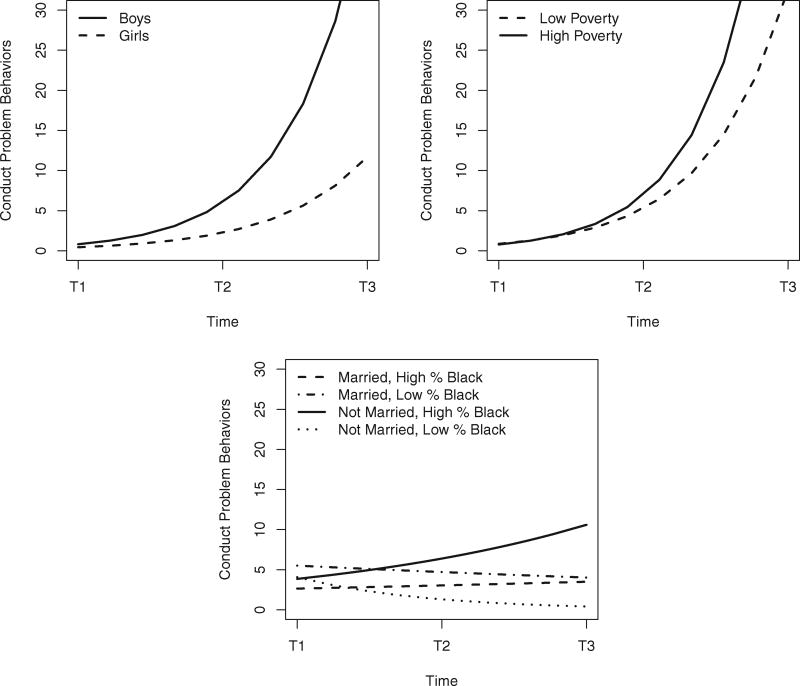FIGURE 1.
Significant two- and three-way interactions. Upper Left: Conduct problem trajectories by sex (adjusted results). Upper right: Conduct problem trajectories by percent neighborhood poverty (adjusted results). Lower Center: Three-way interaction of conduct problem trajectories (marital status × percent of black residents in neighborhood × time). The cut-offs for low and high poverty in the figures were set to the 25th and 75th percentiles, respectively, and the low and high cut-offs for percentage black were set to the 50th and 100th percentiles because the data were negatively skewed (Mean = 88.1%, Median = 91%).

